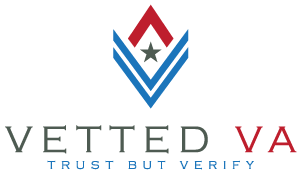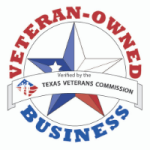A recent post in the Vetted VA Facebook Group outlined a question that many veterans share:
“If I have an employment gap, and I’m shopping for a VA loan, how do I find a lender who will work with my situation without tanking my credit score?”
It’s a fair question — and the answer involves understanding both VA income rules and credit shopping protections.
Let’s unpack what’s really going on and how you can shop confidently without surprises in underwriting.
A Common VA Borrower Question: “How Do I Shop for a Lender Safely?”
It’s wise to shop around for lenders — the VA encourages it. But when your situation includes an employment gap or variable income, you may worry that each lender will run a new credit check or give conflicting answers.
That can make you feel like you’re taking five separate hits to your credit score before you’ve even found a house. The good news? You can shop smart — and legally protected — under both VA and CFPB rules.
What the VA Handbook Says About Employment Gaps
According to the VA Lender’s Handbook (VA Pamphlet 26-7, Chapter 4, Section 2.e), underwriters must verify at least two years of employment — but that doesn’t mean two uninterrupted years with the same employer.
Here’s what the Handbook requires:
“If the applicant has been employed by the present employer less than 2 years:
Verify prior employment plus present employment covering a total of 2 years.
Provide an explanation of why 2 years of employment could not be verified.
Compare any different types of employment verifications (VOE, pay stubs, tax returns) for consistency.
Clarify any substantial differences in the data that would have a bearing on the qualification of the applicant.”
(VA Pamphlet 26-7, Chapter 4, pg. 4-7)
So, if your gap was brief or you returned to work in the same line of work, your lender can often justify the break as a temporary interruption — especially if your current job has stable hours or pay.
“If the field of work is the same, the argument is strong that the gap was justified and continued full employment is likely,” notes Vetted VA.
How Underwriters View Work History and Continuity of Income
When underwriting your loan, VA-approved underwriters look for continuity and stability — not perfection.
They’ll ask:
-
How long was the gap?
-
Why did it occur (school, relocation, medical, deployment, etc.)?
-
Is the borrower back in the same line of work?
Short, explainable gaps — especially when returning to the same profession — rarely stop VA loan approval.
Understanding Credit Inquiries When Shopping for a VA Loan
Another major concern for borrowers is credit score impact from multiple lender checks. Thankfully, this is also addressed by federal regulation.
When you apply for a mortgage, all inquiries for the same loan type within a 45-day period are counted as one inquiry under FICO scoring models and the FACT Act, as confirmed by the Consumer Financial Protection Bureau (CFPB).
“You have a 45-day window to shop having your credit pulled by entities that offer the same services,” the CFPB states. “Within that window, multiple mortgage inquiries are treated as a single inquiry.”
Source: CFPB – What Happens When a Mortgage Lender Checks My Credit?
So, whether you talk to one lender or five, all those credit pulls will count as one — as long as they’re within that 45-day period.
The 45-Day Rate Shopping Window Explained
If you stay inside the 45-day comparison window, your score won’t drop each time you apply with a new VA lender.
If you go beyond that window:
-
The first pull might reduce your score by 1–3 points, temporarily.
-
The second pull (months later) could have a small impact (another 5–10 points).
-
Once your loan closes, your score typically rebounds quickly as the inquiry ages.
In other words: shopping within that time frame does not hurt your credit, and the benefit of finding the right lender far outweighs a small temporary score change.
How to Compare Lenders and Loan Estimates the Right Way
Once you have a preapproval and your credit has been pulled:
-
Request a Loan Estimate (LE) — this standardized form shows your rate, fees, and projected monthly payment.
-
Share your credit report (recently pulled) and basic application info with other lenders.
-
Ask them to provide their own Loan Estimate for the same terms.
-
Compare side by side — look at Box A (Lender Fees) and APR, not just the interest rate.
Under the TRID Rule (Truth in Lending and Real Estate Settlement Procedures Act Integrated Disclosure Rule), lenders must issue a Loan Estimate within three business days of receiving your complete application.
This lets you compare true costs — not just advertised rates.
Step-by-Step Example: A Smart Way to Shop for Your VA Loan
Here’s what a healthy, compliant rate-shopping process looks like:
-
Get Preapproved – Choose one VA lender, share full income and employment details, and pull credit once.
-
Collect Documentation – Pay stubs, W-2s, VA disability income, and a letter of explanation if there’s an employment gap.
-
Request a Loan Estimate (LE) – Within three business days of application, your lender must provide it.
-
Shop Other Lenders (within 45 days) – Share your LE and ask, “Can you match or beat this?”
-
Compare and Decide – Once you select your lender, they’ll take your file through underwriting.
Total time? Usually 48 hours to compare, without damaging your credit.
Final Thoughts from Vetted VA
Shopping for a VA loan takes patience — especially if you’ve had an employment gap or complex income history. But the system is built to protect you.
-
You can shop freely within a 45-day credit window.
-
Employment gaps can be explained and accepted when consistent with your career path.
-
The VA Handbook provides clear guidance lenders must follow.
“The path may feel stressful,” Vetted VA reminds, “but shopping your mortgage application is extremely important if you want to find the right mortgage equation for you.”





